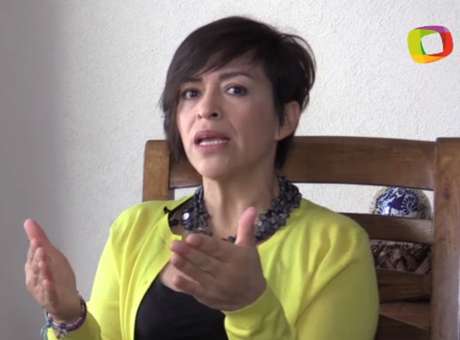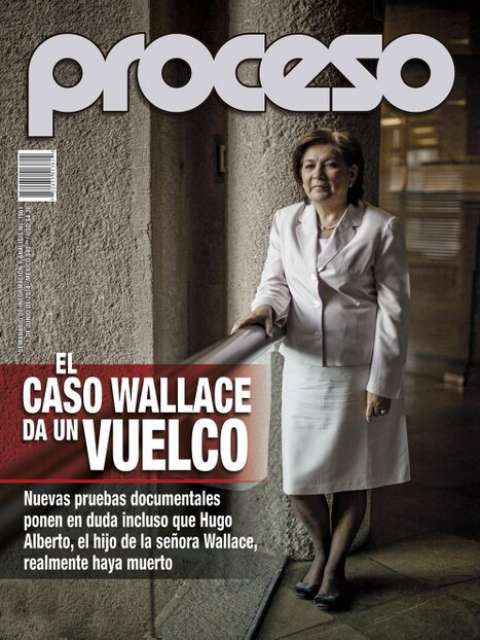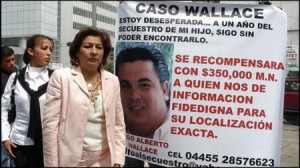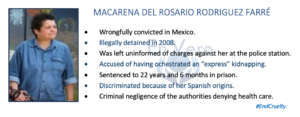Source: Noticia Terra mx via MXporFCassez
Author: Armando Hernández
June 19, 2014
Translation: JB. for CART / ACDV
The Wallace Case, an example of the manufacture of guilty defendants?
The doubts surrounding the Wallace case open the debate and show the harsh reality in Mexico about the manufacture of crimes and guilty defendants.
Amid alleged inconsistencies in the case, Isabel Miranda de Wallace leads an adverse scenario.
The case is complex. The investigations published by the journalist Anabel Hernández point out that the activist, who received the National Award for Human Rights in 2010, helped by the authorities, led in the manufacture of evidence to find culprits around the alleged abduction and killing of her son, Hugo Alberto Wallace.

publications on the Wallace case. Photo: Terra
In recent days, the journalist published alleged anomalies in the case, in which she would have found three unanswered questions:
(1) Isabel Miranda lied about Hugo Alberto’s true paternity since he is not the offspring of her marriage to Enrique Wallace Díaz.
(2) Hugo Alberto is suspected of having a double identity, with the possibility that he is alive.
(3) The alleged complicity of the PGR (General Attorney of Mexico) in the investigation, with omissions and changed expert opinions would become apparent.
According to the journalist, the case goes beyond a war of words between her and Miranda de Wallace, because her objective is to show the deficiency of the judiciary system in Mexico.
“The woman is not my problem, the problem is how the PGR (Attorney General of Mexico) allowed the manufacture of these themes and helped support them for so long,” she said in an interview for Terra.
She added that the PGR, far from denying or confirming the possible manufacture of evidence and culprits, seems to have left the President of the civil association “Alto al Secuestro (Stop the kidnappings) on her own.”

Photo : Magazine Proceso
Isabel Miranda and the failed justice system
According to the analysis by Hernández, Isabel Miranda Torres is one of the most important figures in manufacturing culprits in Mexico.
Among the loose ends, there is also the fact that even in the absence of the victim’s body, a fictitious autopsy report signed by a coroner was issued. In addition, there is the disappearance of the only sample of blood that accompanied the initial expertise, mainstay of the indictment, expertise which triggered sentences to César Freyre, Juana Hilda González and the brothers Alberto and Antonio Castillo Cruz together with Jacobo Tagle and Brenda Quevedo Cruz.
Despite this, in one of her last public statements, Wallace affirmed the robustness in the criminal process on the kidnapping and murder of her son, where there are three confessions by those sentenced accepting the crime. However, the shadow of the alleged torture to which they were subjected also accompanies this claim.
For the Canadian Association for Rights and Truth, which backed Florence Cassez facing the violation of due process and the manufacture of evidence, the facts show that the case of kidnapping and murder of Hugo Alberto Wallace is riddled with irregularities and contradictions.
Politics are also involved. Jenaro Villamil, media specialist journalist, considers that the lead role of Miranda de Wallace resulted when she became the counterweight to the critics headed by another activist, Javier Sicilia, leader of the “Movimiento de Paz con Justicia y Dignidad (Movement for Peace with Justice and Dignity),” which condemned the violent strategy of the Calderon Government. Whereas Miranda, who always supported the struggle of Felipe Calderón, received the National Award for Human Rights from the hands of the President.

Photo: Notimex
The fallacy in the justice system
The “Centro de Derechos Humanos Miguel Agustín Pro Juárez” (Center for Human Rights) affirms that the picture is clear: In Mexico, it is well known that there is an archaic system of justice, which in many cases corresponds to certain interests.
“Government departments and the authorities in general work in the manufacture of crimes and use illegal evidence, without actual investigations. Most crimes go unpunished or innocent people are in prison,” Andrés Díaz Fernández, Coordinator of the center of Defense Area said.
“There are many people who are part of this great fallacy in the justice system,” added the lawyer, who was part of the defense that won the freedom of the Otomí indigenous woman Jacinta Francisco Marcial, who, along with Teresa González and Alberta Alcantara, were accused without compelling but effective evidence for the authorities to keep them in prison for three years.
“A big problem in this system is the centralism of the executive power, over the legislature and the judiciary, where there are great interests operating in certain areas,” without leaving aside the corruption that permeates among judges and public ministries, Díaz Fernández explained.
For this and other cases, it is no wonder the citizen distrust of the judicial system. Even, according to the “Instituto Nacional de Estadística y Geografía (National Institute of Statistics and Geography), in its survey on the quality and government impact, 8 out of every 10 Mexicans perceive the police as the most corrupt social sector, followed by the public ministries and the political parties.





